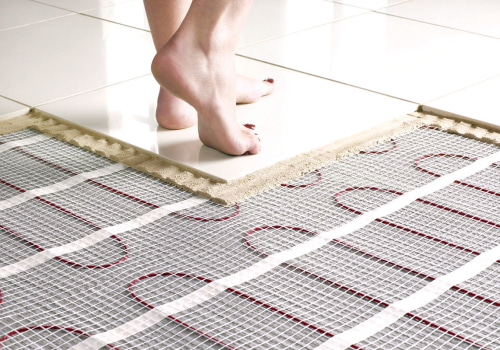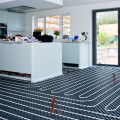While it is true that underfloor heating does not produce as much heat as a conventional radiator, it does generate enough heat to create a comfortable environment. The system works to distribute heat evenly over the entire surface of the floor, so that the ambient temperature can reach up to 25° C. Yes, electric floor heating can be used as the main heat source in most rooms. Underfloor heating is a cleaner and smarter way to heat your home.
Using radiant heat technology, UFH gently heats people and objects in the room directly from scratch, facilitating a much more energy-efficient method. Well, it depends on the output of the underfloor heating, but in general they are enough to heat a room. Radiant heating produces radiant heat, while radiators rely on convection to distribute heat throughout the room. The air heated by a radiator moves upwards and, once it has cooled, it moves downwards to be reheated by the radiator.
Ultimately, this establishes a flow of warm and cool air throughout the space, while the UFH provides even heat distribution, resulting in impressive levels of internal comfort. If you opt for a whole-house underfloor heating system, there will be separate pipes that will go to each room. This allows you to control when those rooms or “zones” are heated and for how long, preventing you from having to heat unoccupied spaces. You can heat an entire house with water or electric underfloor heating systems.
Heat from either system will radiate upward throughout the house. You need adequate insulation to prevent heat loss from the house and retain heat from underfloor heating. Can underfloor heating heat an entire house? We are pleased to say that it is absolutely possible, in the right scenario, which is an exciting prospect, especially considering the benefits of radiant heat from not blowing air (which reduces indoor allergies) and the relaxing comfort of the whole room (there are no cold air pockets in the room). There are a few things to keep in mind if you plan to use a floor heating system as your main source of heat.
Rapid heating methods, such as central heating systems, will quickly raise the temperature of the air in the room and you will feel warmer much more quickly. The thermal circulation of air that rises to the ceiling and then returns causes all the dust to go in circles, which will not happen with a floor heating system. UFH heats the mass of the floor (the screed and the finish of the floor) and that heat then (mostly) radiates into the room, there is some convection, but more than 80% of the heat transfer is by radiation. Ultimately, the efficiency and success of a floor heating system will depend on quality and design.
It is also worth noting that underfloor heating systems have a service life of more than 50 years, while the average radiator will only last 8-12 years before becoming inefficient. With underfloor heating systems, you can enjoy your entire room without radiators on the walls. WarmlyYours also offers a variety of underfloor heating products with different wattages per square foot (from only 11 W to 20 W). The zone control will be placed in a place where the owner can make adjustments, while the underfloor heating collectors will be placed out of the way, under stairs or in a closet, so that they are not annoying.
Insulation plates prevent heat from spreading downwards and push as much heat as possible onto the surface layer. However, you will have to make some additional adjustments because the radiators operate at about 60°C (140°F) and the underfloor heating at 40°C (104F) or lower. Due to the maximum temperature limitations of some flooring manufacturers, some types of coating may not serve as an optimal choice for a main or single source of heat. The only way to know for sure is to perform a heat loss calculation for the space, and then match the heating capacity of the system with the heating demand of the space.
However, to determine whether this chain reaction will effectively heat the room as the main heat source, you need to consider at least these main variables, such as climate, insulation, the position of the room (s) in the house, whether there are cement slabs or crawling spaces under the room and whether the type of floor you want to use in the room is compatible with the requirements of radiant heat. . .











